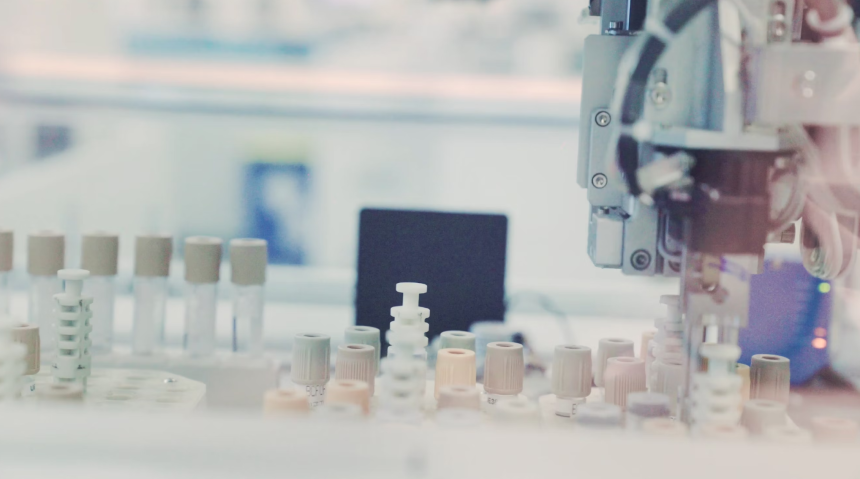P21 is a peptide that has attracted considerable interest within the scientific community due to its diverse potential implications in various fields of biotechnology research. Characterized by its unique amino acid sequence, P-21 may exhibit properties that might be harnessed to support cellular functions, promote tissue regeneration, and offer new pathways for researchers studying neurodegenerative and cardiovascular conditions. This article explores the potential roles and mechanisms of P-21, emphasizing its molecular interactions and potential physiological implications.
Introduction
Peptides have gained prominence for their potential in numerous fields of research. Among these, P-21 has emerged as a peptide of significant interest. The peptide may possess properties that facilitate various biological processes, which has led researchers to speculate on its potential implications.
Molecular Characteristics and Mechanisms of Action
P-21 is defined by its specific sequence of amino acids, which determines its structure and function. The peptide’s structure may allow it to interact with cellular receptors, enzymes, and other proteins, influencing various signaling pathways. This interaction might be crucial for its potential roles in promoting cellular activities such as proliferation, differentiation, and survival.
One hypothesis is that P-21 may interact with specific cell surface receptors, initiating a cascade of intracellular signaling events. These events might lead to the activation of transcription factors that regulate gene expression, ultimately resulting in the modulation of cellular functions. Additionally, the peptide has been hypothesized to influence mitochondrial activity, thereby affecting cellular energy metabolism and apoptosis.
P-21 Peptide: Tissue Studies
One of the most intriguing aspects of P-21 is the peptide’s potential role in tissue regeneration. It is hypothesized that P-21 might promote the multiplication and differentiation of stem cells, which are considered essential for tissue repair and regeneration. This characteristic might be particularly valuable in wound healing, where the peptide might accelerate the repair of damaged tissues.
Moreover, research indicates that P-21 may support the production of extracellular matrix elements like collagen and elastin, which are vital for maintaining tissue integrity and function. This might be valuable in various experimental scenarios, including skin injuries, burns, and wounds.
P-21 Peptide: Neuroprotective and Neurodegenerative Research
P-21 has also been speculated to possess neuroprotective and neuroregenerative properties. Research indicates that the peptide might influence neuronal survival and differentiation, making it a candidate for further study in the context of neurodegenerative diseases. For instance, investigations purport that P-21 may support the survival of neurons under stress conditions, potentially offering a protective impact against neurotoxicity.
Additionally, the peptide has been hypothesized to stimulate the growth and differentiation of neural stem cells, promoting the regeneration of damaged neural tissues. This characteristic might be particularly intriguing for study within the context of illnesses like spinal cord injuries and neurodegenerative conditions like Alzheimer’s and Parkinson’s diseases.
P-21 Peptide: Cardiovascular Research
Another area of interest is the potential cardiovascular implications of P-21. It has been theorized that the peptide might support angiogenesis, forming new blood vessels from existing ones. This property might be valuable in the context of ischemic conditions, where improved blood supply is deemed necessary for tissue survival and function.
Furthermore, P-21 seems to protect cardiomyocytes, which comprise cardiac muscle tissue. By promoting the survival and function of these cells, the peptide has been theorized to contribute to the maintenance of cardiac function in various pathological pathologies, including myocardial infarction and heart failure.
P-21 Peptide: Inflammation and Immunity
Inflammation is a purportedly critical component of many pathological conditions, and the ability to modulate inflammatory responses is desirable for research agents. Findings imply that P-21 might exhibit anti-inflammatory properties by impacting the activity of immune cells and the production of inflammatory cytokines.
It has been hypothesized that the peptide might modulate the activity of macrophages, which appear to play a central role in the inflammatory response. By promoting a shift from a pro-inflammatory to an anti-inflammatory phenotype, P-21 might help to resolve inflammation and promote tissue repair.
P-21 Peptide: Oxidative Stress
Oxidative stress is involved in many conditions, and agents that can mitigate oxidative damage are of significant interest. Scientists speculate that P-21 may possess antioxidant properties, potentially lowering the production of reactive oxygen species (ROS) and enhancing the activity of endogenous antioxidant enzymes.
It has been hypothesized that the peptide’s potential to reduce oxidative stress might affect various conditions, including neurodegenerative diseases, cardiovascular diseases, and cellular aging. By protecting cells from oxidative damage, P-21 might help preserve cellular function and prevent disease progression.
Conclusion
P-21 is a peptide with many potential implications in scientific research and biotechnology. Its potential to interact with cellular receptors and influence various signaling pathways might underlie its potential roles in tissue regeneration, neuroprotection, cardiovascular function, and inflammation modulation. While much of the current understanding of P-21 is speculative, ongoing research may elucidate its mechanisms of action and research potential.
Lynn Martelli is an editor at Readability. She received her MFA in Creative Writing from Antioch University and has worked as an editor for over 10 years. Lynn has edited a wide variety of books, including fiction, non-fiction, memoirs, and more. In her free time, Lynn enjoys reading, writing, and spending time with her family and friends.















